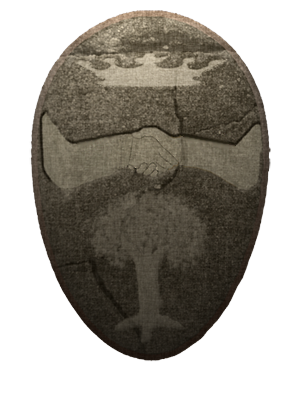









Karl Eugene FortessKarl Eugene Fortess (American 1907-1993) Born 1907, Antwerp, Belgium. Naturalized US citizen, 1923. Karl Fortess studied at the Art Institute of Chicago and the Art Students League. His work has a surrealist bend and is most often identified as of the Woodstock School. Fortess exhibited at the Museum of Modern Art, Whitney Museum of Art, Metropolitan Museum, Woodstock Art Association, Boston Art Mu seum, and Carnegie Institute. Trains, trucks, and industrial buildings were what Karl Fortess envisioned when the Public Works of Art Project suggested that he depict “the American Scene.” The artist left his home in the picturesque artists’ colony of Woodstock, New York, and traveled ten miles to Kingston. Kingston had long been a thriving Hudson River port town that supplied Pennsylvania coal and local brick, stone, and cement to New York City. The Depression slowed shipping, but a newly invented concrete mixture stimulated the local cement business. Fortess’s pictorial research at Kingston was demanding, as he noted, “Inclement weather and bad roads have made it impossible to go into Kingston as often as necessary.” He was awarded the Guggenheim Fellowship in 1946, the Childe Hassam Fund purchase award in 1952, and many other juried prizes during his career. In addition to working as a WPA artist and administrator, Fortess taught at the Art Students League, Brooklyn Museum Art School, and Boston University.
Works
|